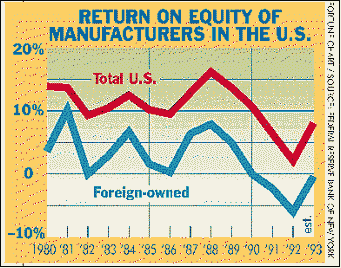Cash flow analysis
Category: Corporate Banking
The cash flow gives the analyst a better understanding of a company’s financial strength than traditional balance sheet ratios, which all too often have not provided creditors with early warning signals. Cash flows are less prone to distortions by accounting policies or changes in accounting methods. They supply the credit analyst with a comprehensive breakdown of all the major sources and uses of cash in a business, thus enabling him to better assess the long term solvency of a company and its capacity to service and repay debt.
Definition and significance of cash flow
Cash flow is normally described as «profits plus non-cash charges». The cash flow shows the amount of money that is effectively at the disposal of the company. It is one of the most important financial figures from the banker’s point of view, because of the following reasons:
— The cash flow helps to identify the company’s sustainable core earnings.
— It displays the amount of cash that is used (released from the company’s current operations) to sustain or to grow the business.
— It reveals the cash which is available to service debt. This helps to calculate whether a company can «afford» a certain loan at certain terms.
— Finally, the cash flow indicates how much cash is available from internal sources to finance long term growth.
The following table gives an overview of the sources and uses of cash as they are reflected on the balance sheet. An increase of liabilities, e.g. by enlarging debt, provides cash, just as an increase of assets, e.g. by stocking up the inventory, uses cash.
Sources and uses of cash
| Sources | Uses | |
| Increase | Liabilities (e.g., payables, debt, …) | Decrease |
| Increase | Net Worth (e.g., capital raise) | Decrease |
| Decrease | Assets (e.g., receivables, inventory) | Increase |
| Cash profits | Profit & Loss Account | Cash losses |
Cash flow forecasts
It is important to see how long it would take a company to repay its current debt, if it continuously earned the same cash flow:
|
Net debt = Years necessary to repay all debt Gross cash flow |
So, if a firm had net debt of DM 10 m. and a gross cash flow of DM 2 m., it would take five years to repay all debt, provided the company would sustain a cash flow of at least DM 2 m. for the next five years.
A more complex calculation of debt capacity is required if one wants to know how much debt a company could service (principal and interest payments) at a given cash flow over a given period of time at a given interest rate. The Present Value (PV) of future cash flow (discounted) has to be calculated. Given continuous cash flows of DM 500,000 per annum available to service debt for the next five years, and interest rates of 10%, how much debt could this company service?
PV = Cash flow +Cash flow +Cash flow +Cash flow +Cash flow
1+Int.Rate (1+R)2 (1+R)3 (1+R)4 (1+R)5
PV = 500,000 +500,000 +500,000 +500,000 +500,000
1.1000 1.2100 1.3310 1.4641 1.6105
= DM 1,895,395.
The company has a capacity to service debt of DM 1,895,395 over five years at an interest rate of 10 %. If the company had debts outstanding of, e.g., DM 4 m., the bank would face a refinancing risk of DM 2,104,605, that is 52.6 %.
In reality, no company has the same continuous cash flow for a number of years. Thus, it is necessary to try to forecast the future evolution of a company’s business and its impact on the balance sheet and the profit and loss account. Management must provide the bank with its assumptions of how sales, profit margins, net trading assets, asset turnover, depreciation, operating profit and so on will look in the coming years. The credit analyst must ask why the company thinks that things should go this way. In most cases, the outcome will be different from what has been planned in the previous year. Thus, it is important to examine the reasons that have led to these differences, and to adjust the business planning for the next years. Such elaborate planning can supply data about future cash flows which have to find their way into the above mentioned formula. But reality will always be different from the forecast!
Chapter E features a very detailed case study on financial planning and forecasting.
3. Worksheet: Key ratios
The financial statements reflect ability of a company’s management to manage:
— business risk: Generate maximum profit from the minimum level of assets
— finance risk: Finance the assets in such a way as to minimize risks to creditors
— performance risk: Operate the company in a way as to minimize costs and maximize profits.

